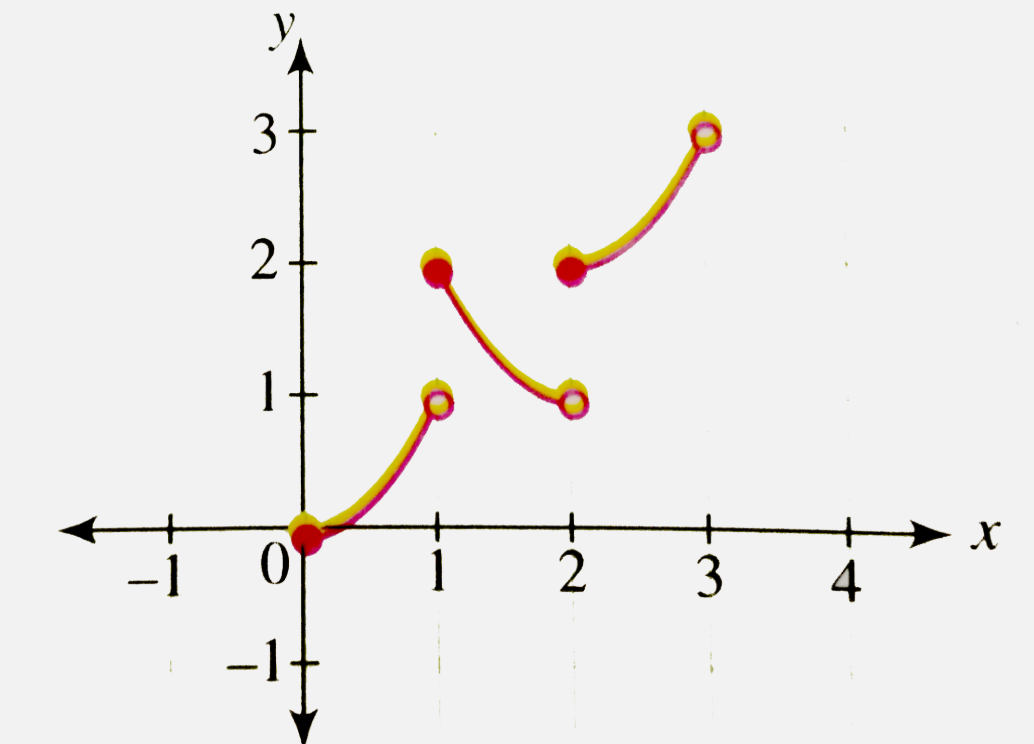The number of elements in the domain of the function , (where [.] denotes the greater integer function) is equal to a. 4 b. 6 c. 3 d. 5Solution in Tamil
6
4
3
5
The correct Answer is:D
and is defined only for integral values of x
Topper's Solved these Questions
- FUNCTIONSBOOK - CENGAGECHAPTER - FUNCTIONSEXERCISE - Multiple Correct Answers Type
10 Videos
- FUNCTIONSBOOK - CENGAGECHAPTER - FUNCTIONSEXERCISE - Comprehension Type
7 Videos
- EQUATION OF PLANE AND ITS APPLICATIONS -IIBOOK - CENGAGECHAPTER - EQUATION OF PLANE AND ITS APPLICATIONS -IIEXERCISE - DPP 3.4
18 Videos
- GETTING STARTED WITH GRAPHSBOOK - CENGAGECHAPTER - GETTING STARTED WITH GRAPHSEXERCISE - Exercise
18 Videos
Similar Questions
The function f(x)=cos−1⎛⎝2[|sinx|+|cosx|]sin2x+2sinx+114⎞⎠ is defined if x belongs to (where [.] represents the greatest integer function)
View SolutionLet f(x)=x2−2x−1∀x∈R Let f:(−∞,a]→[b,∞), where a is the largest real number for which f(x) is bijective. If f:R→R , g(x)=f(x)+3x−1 , then the least value of function y=g(|x|) is
View SolutionLet A(0,6,6), B(6,6,0) and C(6,0,6) are three points and point D is moving on the line x+z−3=0=y. If G is centroid of ΔABC, then minimum value of GD is
View SolutionDoes the following graph pass the vertical or horizontal line test ?

View SolutionIf [.] denotes the greatest integer function and {.} denotes the fractional part,then the domain of the function f(x)=sqrt((x-1)/(x-{x}))+ln(3-[x+[2x]]) is
View SolutionNumber of points of discontinuity of f(x)=[sin−1x]−[x] in its domain is equal to (where [.] denotes the greatest integer function) a. 0 b. 1 c. 2 d. 3
View SolutionThe number of elements in the domain of the function f(x)=sin−1(x2−2x3)+√([x]+[−x]) , (where [.] denotes the greater integer function) is equal to a. 4 b. 6 c. 3 d. 5
View SolutionNumber of elements in the domain of the function is f(x)=sin^(-1)((x^(2)-2x)/(3))+sqrt([x]+[-x])
View SolutionThe domain of the function f(x)=(1)/(sqrt([x]^(2)-2[x]-8)) is,where [^(*)] denotes greatest integer function
View SolutionFind the domain of the following function: f(x)=5[x−12]−3sin−1x2+(7x+1)!√x+1, where [.] denotes greatest integer function.
View Solutionf(x)=sin−1[2x2−3], where [⋅] denotes the greatest integer function. Find the domain of f(x).
View SolutionNumber of points of discontinuity of f(x)=[sin−1x]−[x] in its domain is equal to (where [.] denotes the greatest integer function) a. 0 b. 1 c. 2 d. 3
View SolutionThe number of elements in the domain of the function f(x)=sin−1(x2−2x3)+√([x]+[−x]) , (where [.] denotes the greater integer function) is equal to a. 4 b. 6 c. 3 d. 5
View SolutionThe domain of the function √log13log4([x]2−5) is (where [x] denotes greatest integer function)
View SolutionFind the domain of the following function: f(x)=5[x−12]−3sin−1x2+(7x+1)!√x+1, where [.] denotes greatest integer function.
View SolutionNumber of points of discontinuity of f(x)=[sin^(-1)x]-[x] in its domain is equal to (where [.] denotes the greatest integer function) a. 0 b. 1 c. 2 d. 3
View Solution
